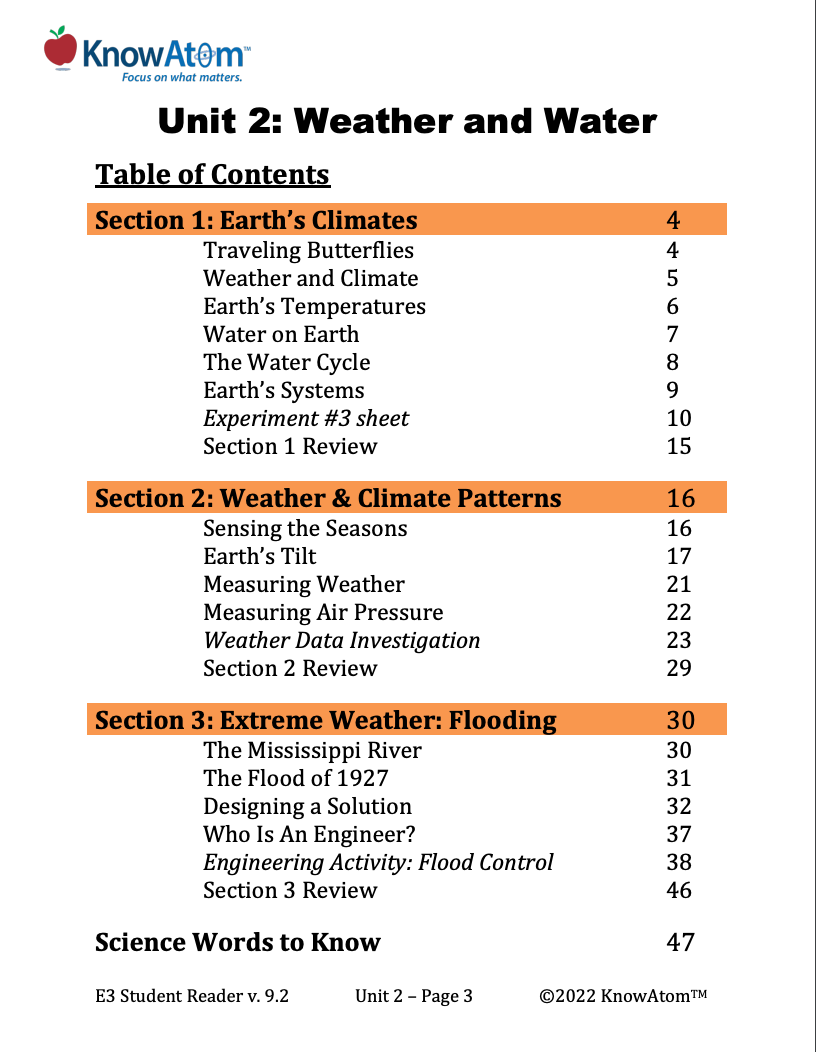
In this unit, students discover how the sun provides light and heat to Earth and how the water cycle influences weather and climate. Students analyze weather patterns in specific regions during a particular season. They then use that knowledge to study the effects of extreme weather on humans, evaluating solutions to protect against those effects.
.png)
In this unit, students explore several phenomena that relate to cooking. In this lesson, students evaluate chemical reactions, and use that knowledge to engineer a prototype that transfers energy by chemical processes. This page showcases key components of this lesson.
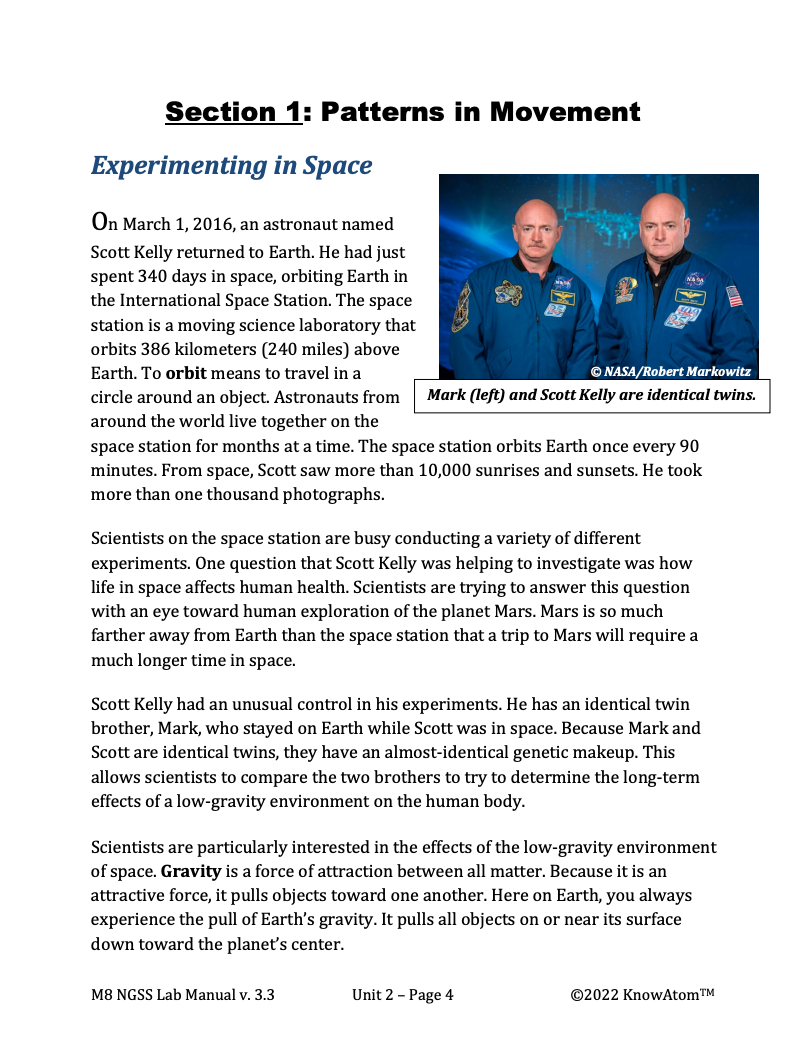
In this unit, students apply what they have previously learned about forces, motion, and matter to the solar system, focusing on the phenomena of gravity’s role in the universe. In this lesson, students engineer a solution to collisions between moving objects in space. This page is a high-level extract of this lesson.
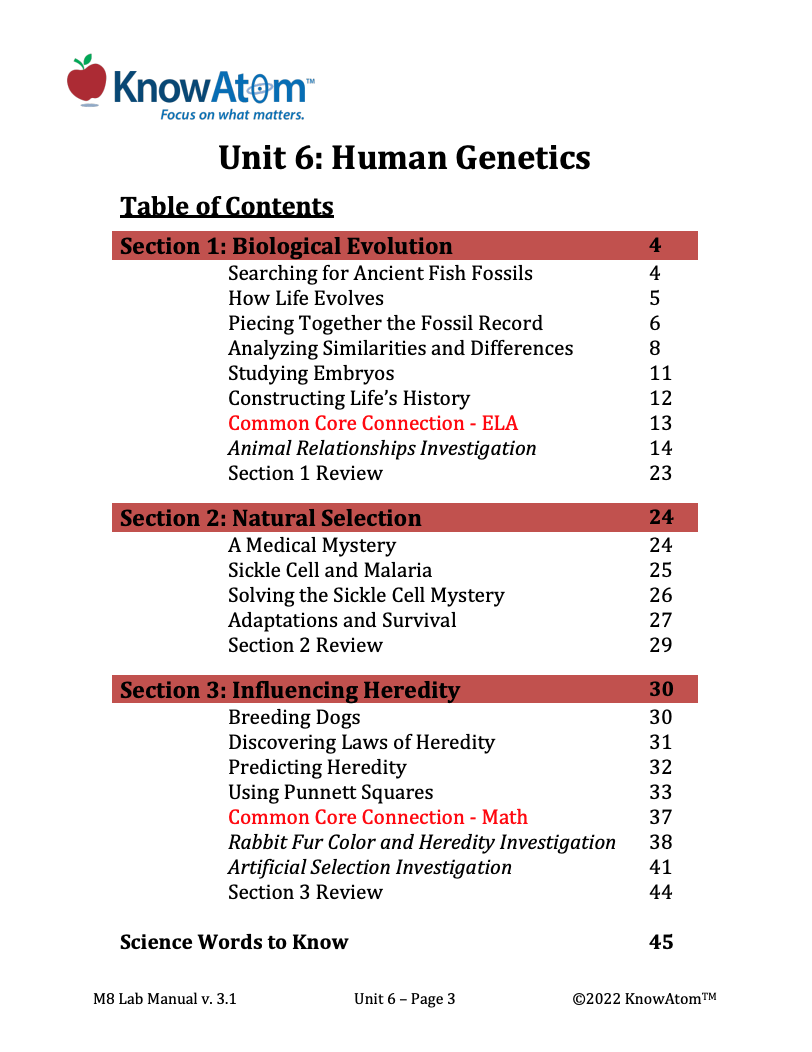
In this unit, students figure out the interconnectedness of genetics, heredity, and evolution. For this lesson, students create an experiment to observe the phenomenon of natural selection determining which organisms are most likely to survive and pass on their traits. This page showcases parts of key components of the lesson.
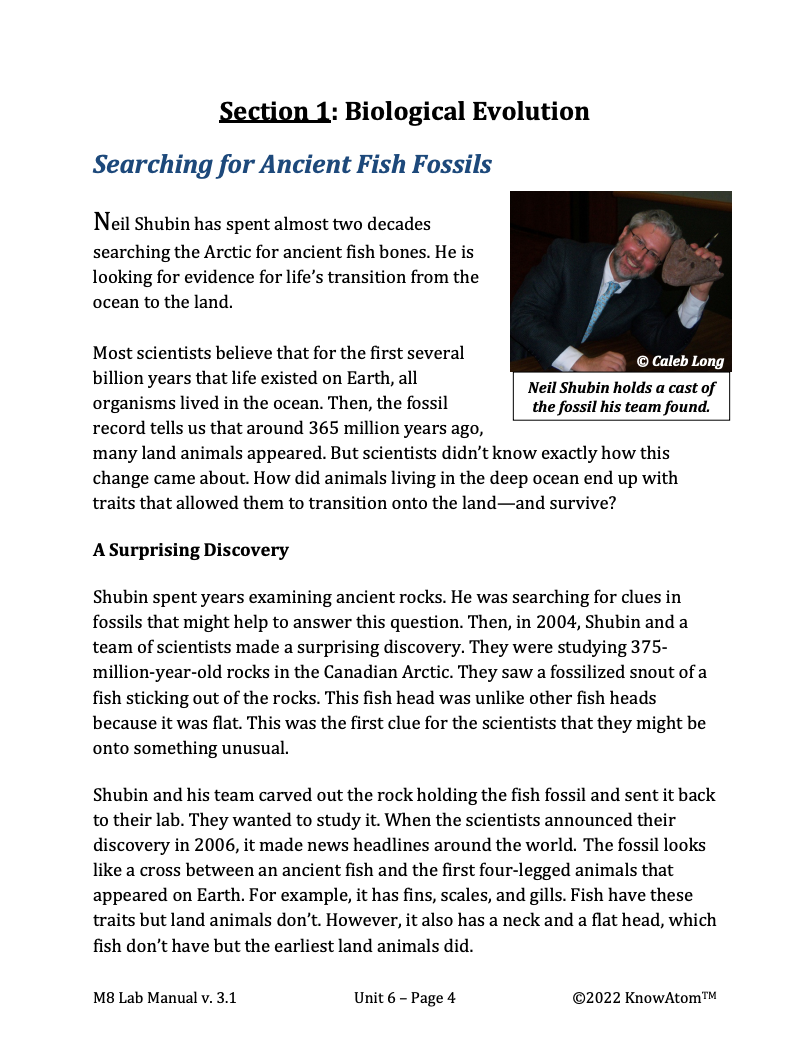
In this unit, students apply what they know about genes and heredity to evolution, focusing on how both genetic information and the environment influence the phenomena of how a population develops over time. In this lesson, students explore the phenomena of how adaptations help some organisms survive. Students also investigate artificial selection. This page showcases key parts of this lesson.
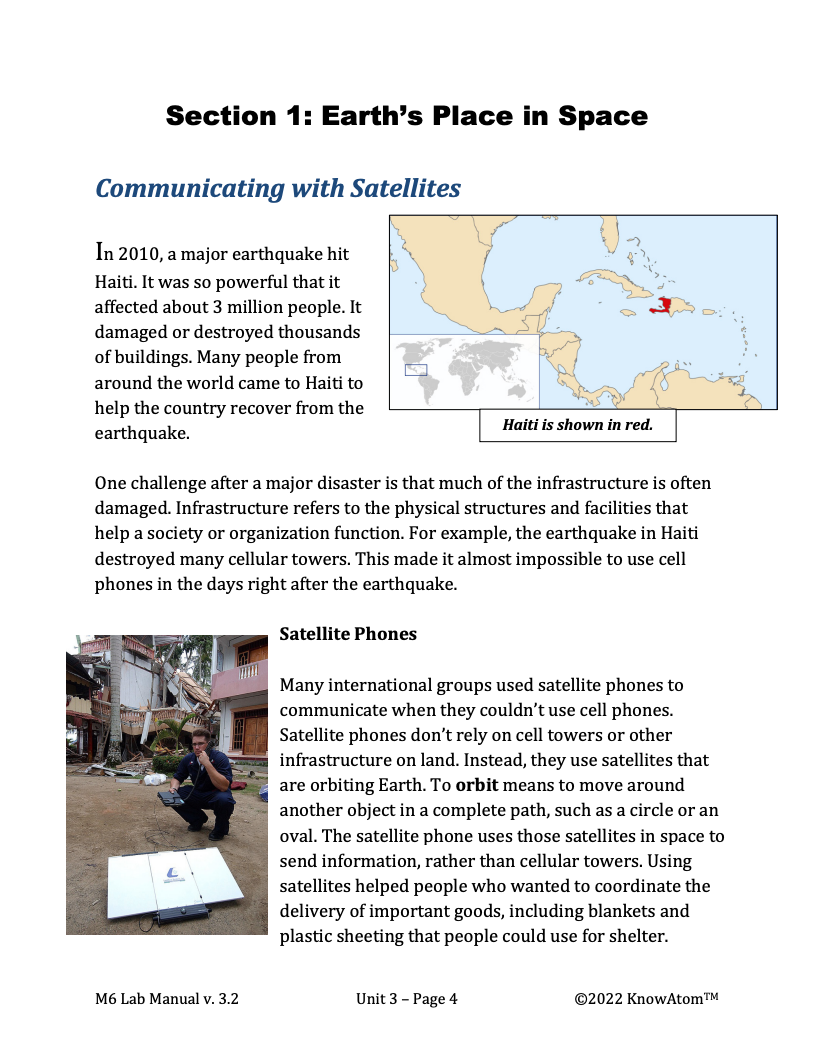
In this unit, students focus on the Earth-Sun-moon system to explore how gravity pulls objects including satellites into orbit. In this lesson, students engineer an insulating solution for a prototype satellite that minimizes the amount of thermal energy transferred into or out of it.
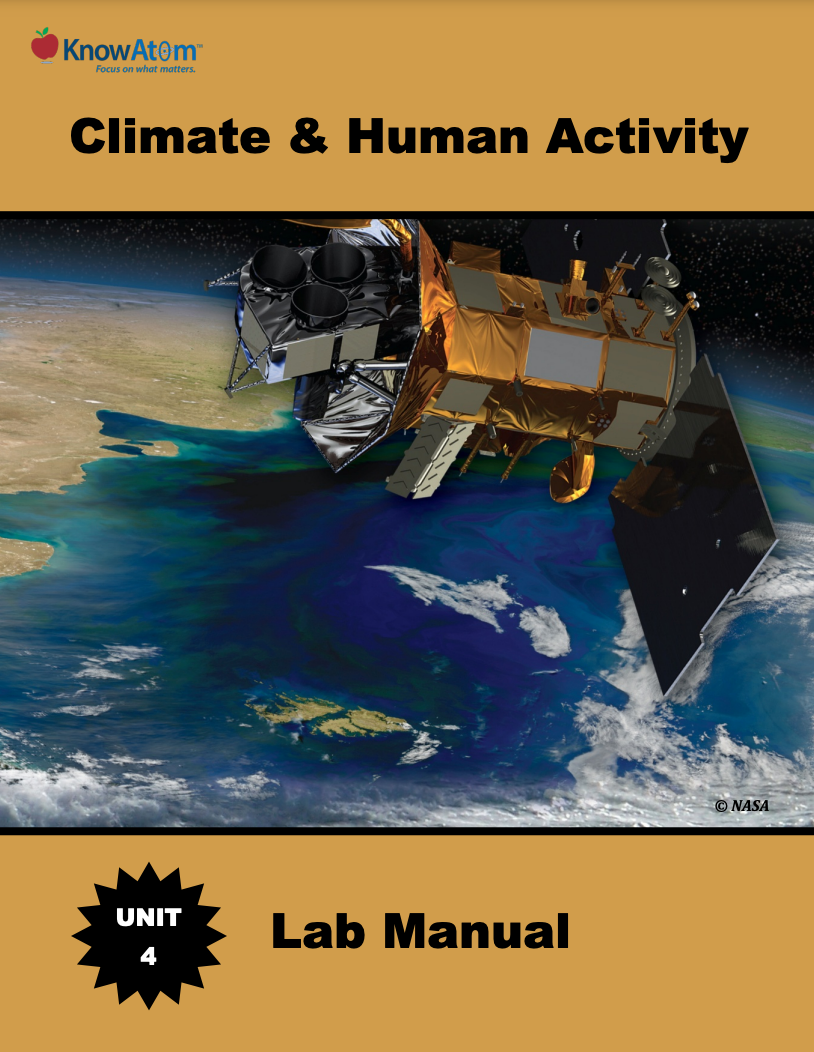
In this unit, students build on their scientific knowledge about matter, energy, and heat transfer to explore the phenomena of weather and climate. They investigate how the sun powers the global water cycle, which in turn has very local impacts that affect the phenomena of regional climates around the world. They then use that knowledge to figure out and design a technology that solves the problem of drought-related water shortages.
Standards citation: NGSS Lead States. 2013. Next Generation Science Standards: For States, By States. Washington, DC: The National Academies Press. Neither WestEd nor the lead states and partners that developed the Next Generation Science Standards were involved in the production of this product, and do not endorse it.
